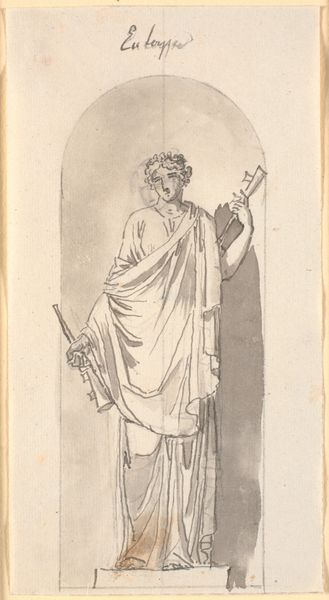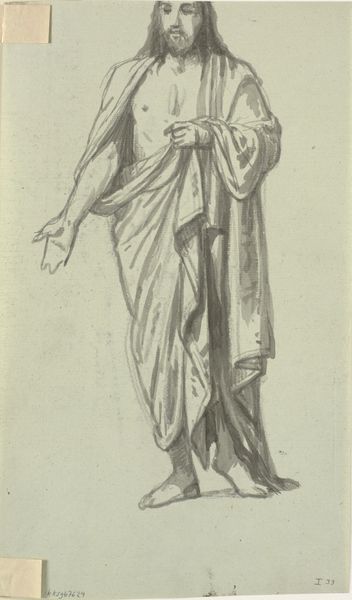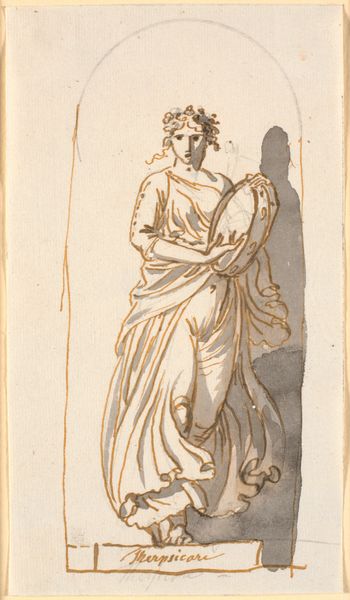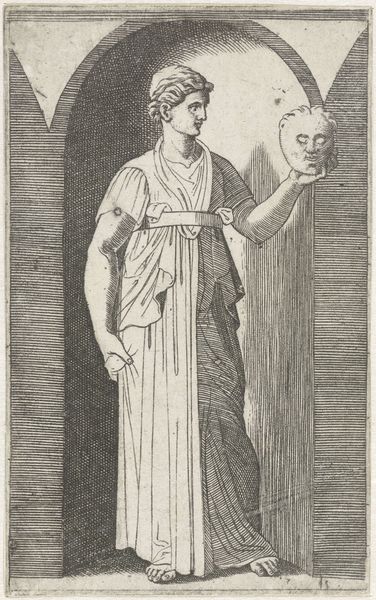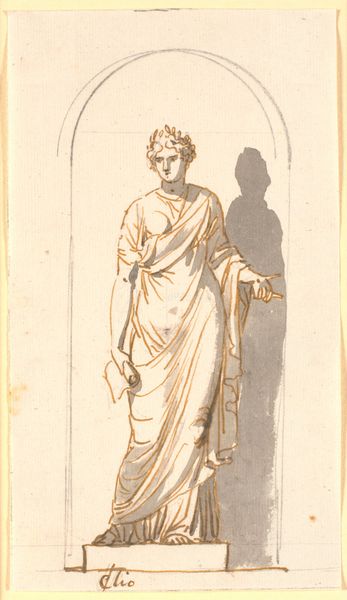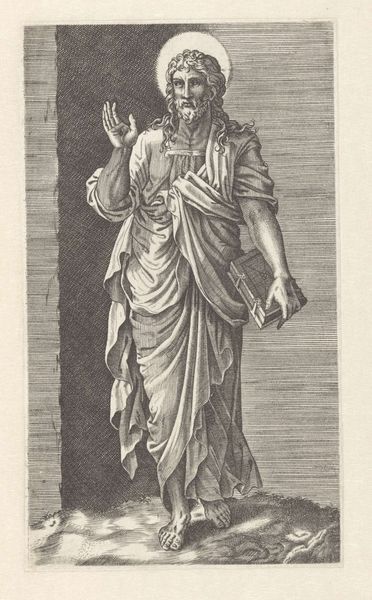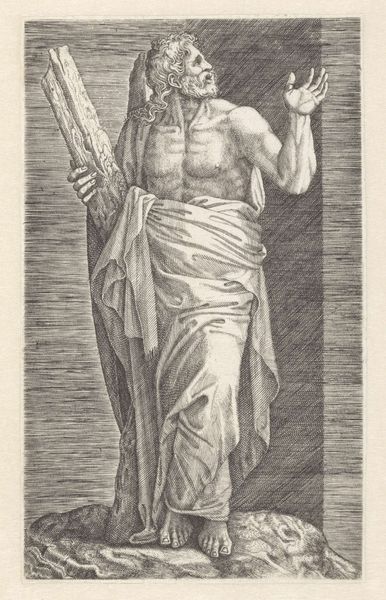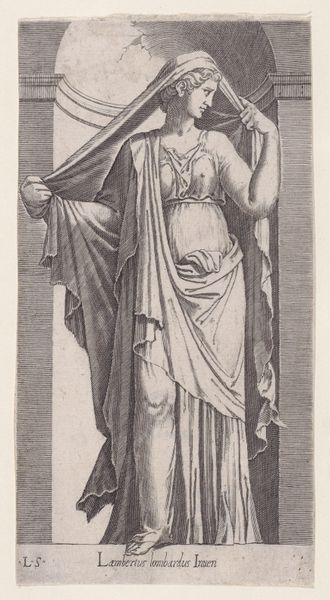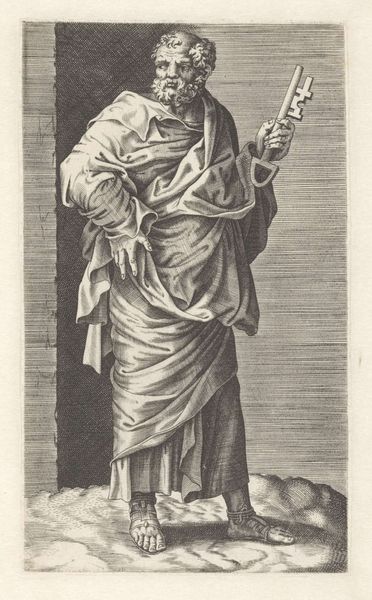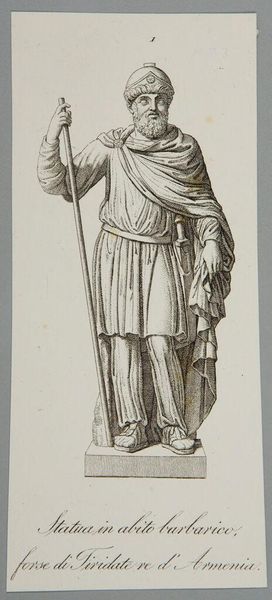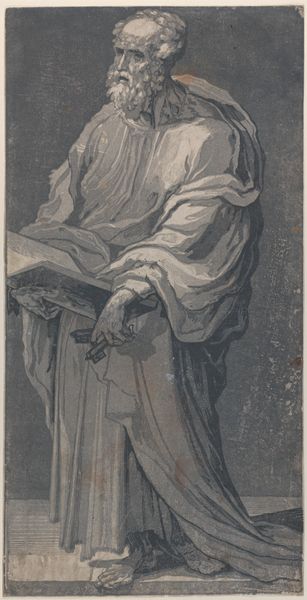
drawing, pencil
#
portrait
#
drawing
#
neoclacissism
#
figuration
#
ancient-mediterranean
#
pencil
#
history-painting
#
academic-art
Dimensions: 200 mm (height) x 113 mm (width) (bladmaal)
Editor: So, this is Nicolai Abildgaard's "Thalia as a statue in a niche," a pencil drawing from the late 18th, early 19th century. It feels very neoclassical in its precise lines, and that pencil work makes me think a lot about the artist's hand. How do you interpret this work? Curator: Immediately, I'm drawn to the implications of the medium – pencil on paper – for our understanding of artistic production at the time. Abildgaard wasn't working with precious materials like marble or bronze. Instead, a relatively cheap and easily accessible material. What does that signify? Editor: Maybe that artistic skill was becoming more accessible? Not just for the wealthy who could afford grand sculptures. Curator: Precisely. The drawing, a preparatory sketch perhaps, highlights the intellectual labor involved. Look at how the production of images changes when materials are democratized! And what about that mask? Editor: Yes, she's holding a theatrical mask. I'd assume referencing Thalia, the muse of comedy. Does the mask point to a commodification of artistic inspiration? Like, the muse as a product? Curator: That’s insightful! Think of the mask itself, mass-produced objects meant to represent and perhaps standardize emotions, readily available for theatrical consumption. It underscores art’s role in shaping and reflecting societal values during the Enlightenment when concepts were being debated. Editor: I hadn’t thought of the material aspects in that way. Considering artistic intention intertwined with socio-economic factors offers another dimension to understand artworks! Curator: Exactly. Examining art through a materialist lens allows us to engage with its complex relationship to the world around it. Editor: I’ll definitely look at materials differently moving forward, thanks!
Comments
No comments
Be the first to comment and join the conversation on the ultimate creative platform.
